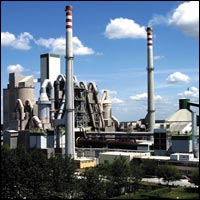KRChoksey is bullish on Ambuja Cements and has recommended buy rating on the stock with a target of Rs 137 in its June 21, 2011 research report.
“Ambuja Cement Ltd net revenues stood at Rs 2207 crore, a growth of 10.9% y-o-y from Rs 1990 crore in Q1CY10 and a growth of 23.4% on a q-o-q basis. Dispatch for the quarter were 5.64 mn tonnes from 5.28 mn tonnes a year ago, an increase of 6.8% y-o-y and an increase of 12.8% on q-o-q basis. The growth in top-line was mainly driven by the concentrated efforts of cement players, wherein the net realizations for Ambuja Cement increased to ~Rs 196/bag, a growth of 9.4% and 3.8% on a q-o-q and y-o-y basis respectively and an average growth in dispatches. We believe that the cement prices are closer to peak levels after the recent hikes that happened in the start of April, reason being that the new capacity addition of ~28 Million tonnes in FY11.”
“Ambuja Cement per tonne realization improved 9.4% on a q-o-q basis & 3.8% on a y-o-y basis to Rs 3913/tonne. The EBIDTA/tonne improved significantly on a q-o-q basis to Rs 1112/tonne an increase of 57% compared to the last quarter, mainly on back of a higher in realization. However the EBIDTA/tonne on a y-o-y basis declined by ~ 10%, mainly because of increase in power and fuel costs which was driven by an increase in coal prices. It is important to note that Ambuja Cement commissioned its clinker plant in H2CY10 yet the EBIDTA/ton on a y-o-y basis has declined. On a consolidated results the EBIDTA margins for Q1CY11 was at 28.4% v/s 32.7 % last year and 19.8 % in the last quarter (Q4CY10).”
“Power & fuel cost increased by 36% to Rs 481.6 crore v/s Rs 355.2 crore, last year. The main reason for the increase in power & fuel cost was higher clinker production, as the new clinker unit commenced production in the second half of CY10 and partly because of the increase in coal costs. Imported coal costs have increased to ~$140/tonne v/s $ 110/tonne last year and domestic coal prices for grade “A” and grade “B” coal have increased by ~150% since Coal India increased the prices for the non-core sector. Distribution expenses increased by 23.4% y-o-y to Rs 508.6 crore v/s Rs 412.2 crore last year, the main reason for increase in freight cost was the increase in diesel prices. The only positive on the cost front has been the decrease in raw material costs to Rs 144.6 crore a decline of 21.1% on yearly basis as company didn’t have to procure the clinker from outside sources as clinker unit that was commissioned in H2CY10 came to the rescue.”
“Ambuja Cement is being priced at a premium to its other large cap peers like ACC and Ultratech Cement, mainly because of its better operating performance, strong balance sheet, and better margins. We believe that the valuation premium that Ambuja Cement has been getting compared to its peers to narrow down in the future as the price discipline in the cement industry is being followed quiet systematically including the southern markets. At CMP of Rs 125.5 the stock is available at EV/EBIDTA of8.6x and EV/Ton of $140 it’s CY11E, we believe that Ambuja Cement at current price is reasonably valued and assign an EV/EBIDTA of 9, with a target price of Rs 137,” says KRChoksey research report.

